Traveling by Shinkansen from Tokyo to Osaka or Nagoya, you would cross several rivers. The rivers visible from this journey typically meander through gravelly riverbeds. These rivers are exemplifying the midstream areas of Japanese rivers. These represent the typical flow of rivers in plain areas and constitute a significant portion of Japan’s river systems.
Have you ever wondered what kind of fish live in these rivers as you gaze out of the train window? Needless to say, the midstream area is located between the sea and the mountains. Being relatively close to the sea, it serves as a habitat for migratory fish that move between the sea and the river. Additionally, the wide riverbed’s meandering nature creates a diverse flow with rapids, shallows, and pools.

While a variety of fish species inhabit these areas, here I would like to introduce five representative fish species commonly found in midstream areas throughout Japan:
1. Ayu (sweet fish: Plecoglossus altivelis)
The Ayu (sweet fish: Plecoglossus altivelis) is a pelagic fish, typically measuring 15–25 cm. It feeds on algae attached to rocks in fast-flowing rapids. In summer, it exhibits territorial behavior around quality stones. A territorial individual will ram any intruders. This behavior is exploited in a unique fishing method where a hooked Ayu is introduced to the territory, and the colliding fish is caught. Being a migratory fish, it grows in the river, spawns in autumn, descends to the sea, and returns to the river the following spring.
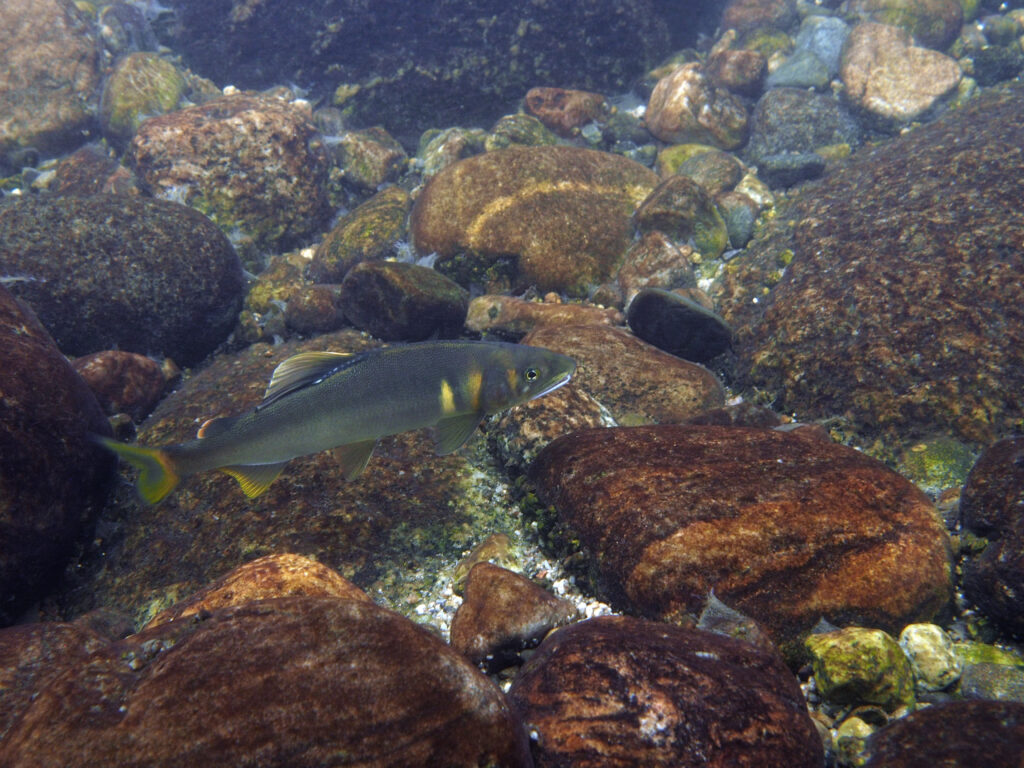
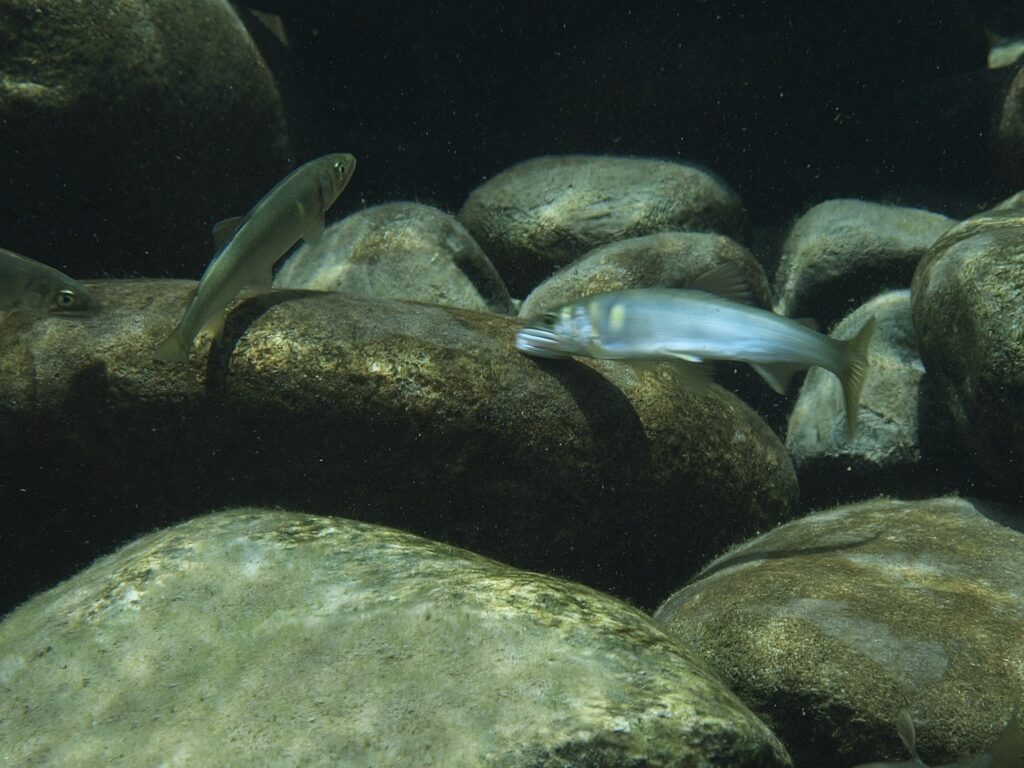
2. Ugui (Japanese dace: Tribolodon hakonensis)
Ugui (Japanese dace: Tribolodon hakonensis) is typically a 15–20 cm pelagic fish. It inhabits slightly slower currents than the Ayu. The life history of this fish varies; some go to the sea as juveniles, while others spend their entire lives in freshwater. In spring, they form large groups in gravelly shallows for spawning. During spawning, both males and females turn red, and the spawning group in the water is a magnificent sight.
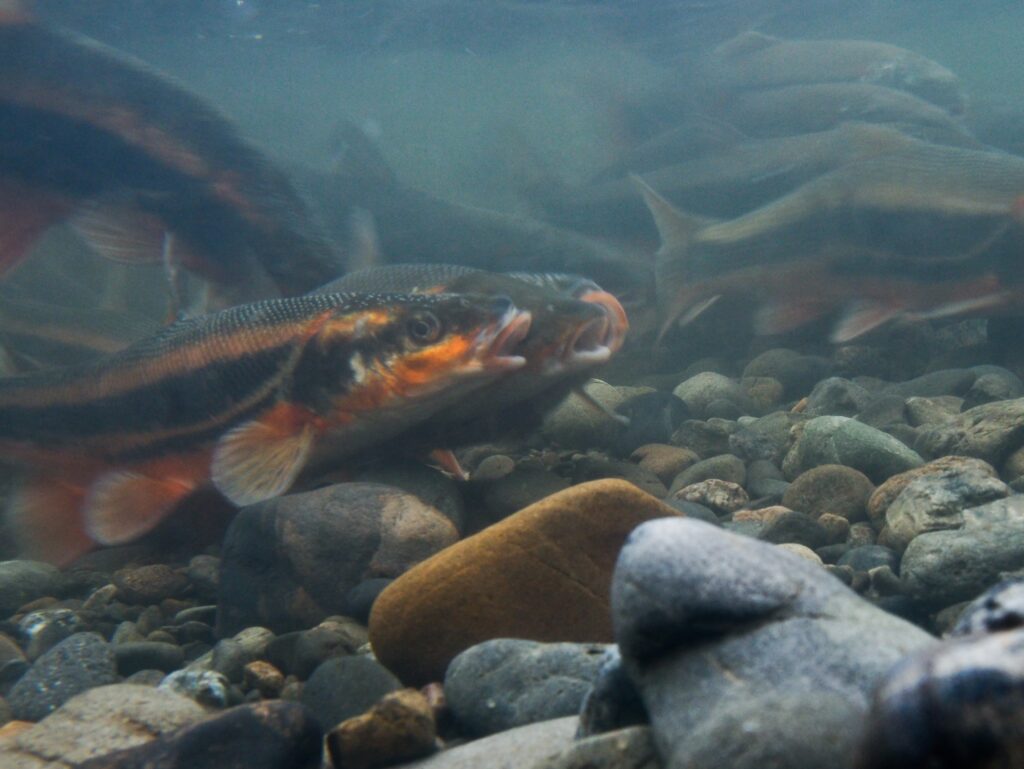
3. Oikawa (Pale chub: Zacco platypus)
Oikawa (Pale chub: Zacco platypus) is generally a 7–12 cm pelagic fish. It spends its entire life in freshwater, preferring shallow areas with sand and small stones – meaning slower currents than where Ayu reside. It feeds on larvae of aquatic insects and algae. In summer, during the breeding season, males turn a vivid blue. Observing from above water, one can witness the drama of male conflicts and the moment of spawning, which, combined with their beauty, is quite dramatic.
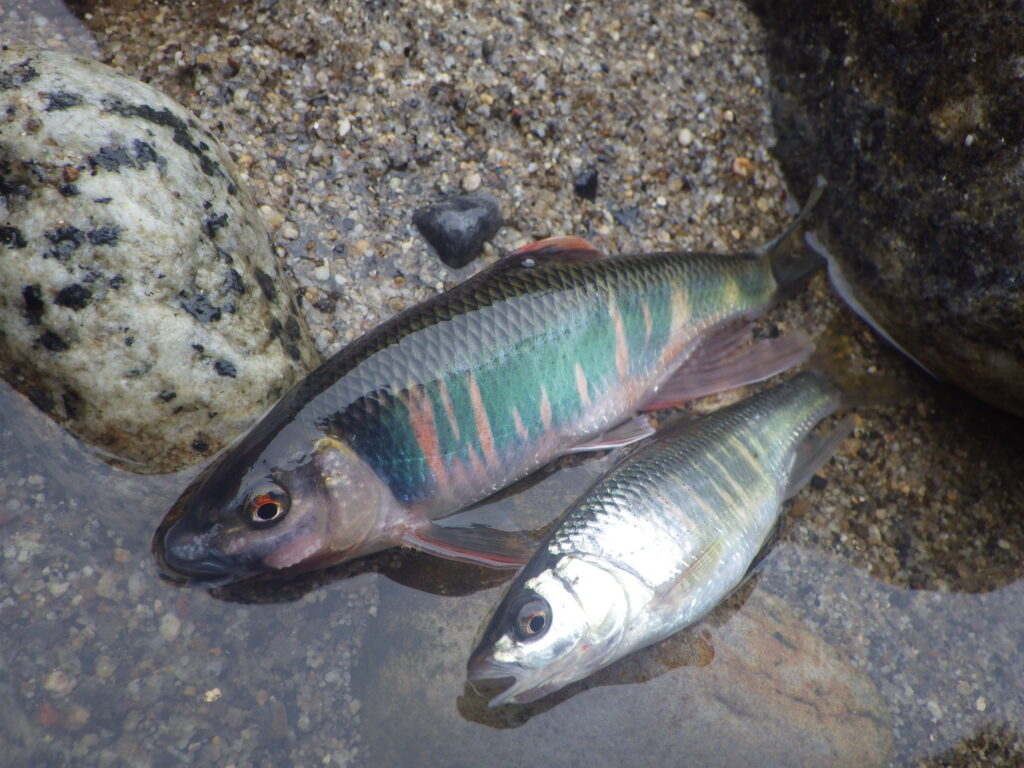
4. Gobies of the Genus Rhinogobius
Gobies of the Genus Rhinogobius, typically 5–10 cm, are small benthic fish. The genus includes multiple species, each preferring slightly different environments. Many species within this group are migratory, moving between the sea and rivers during their lifecycle. Their primary diet is aquatic insects. A unique feature is their ability to cling to rocks and stones using their sucker-like pelvic fins. During breeding, males display bright colors and build nests under stones to attract females. Also, males are observed guarding and caring for the eggs until hatching.
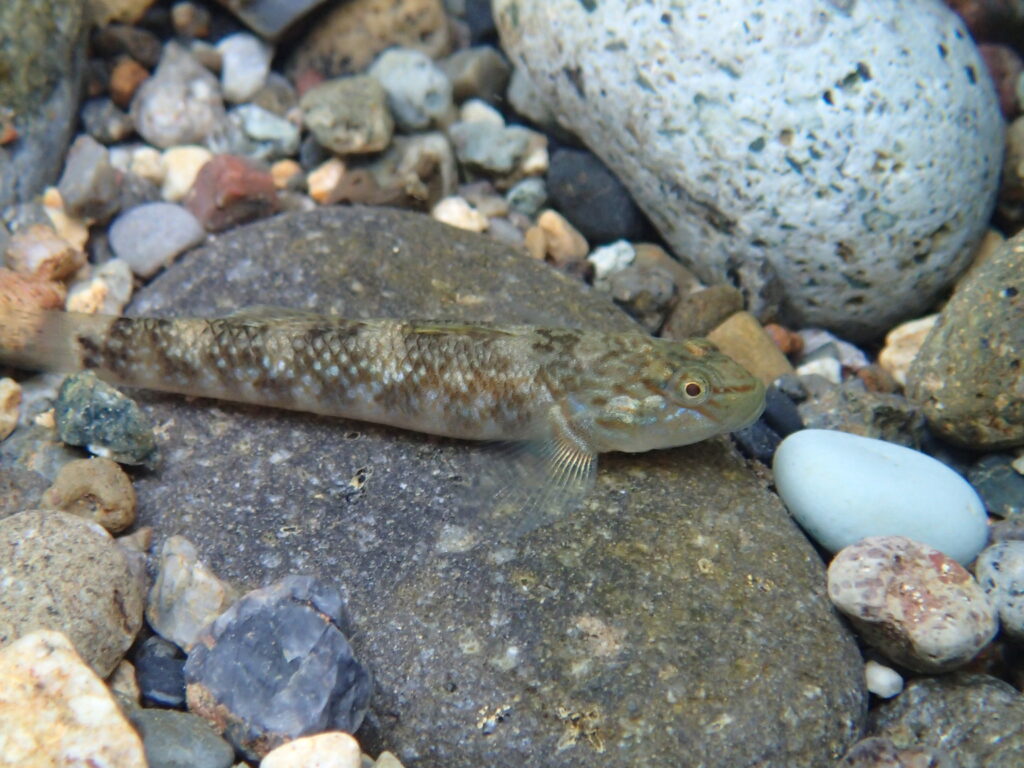
5. Striped Loaches of the Genus Cobitis
Striped Loaches of the Genus Cobitis, typically 7–10 cm, are small bottom-dwellers. In midstream river areas, they commonly inhabit sandy bottoms in pools. They feed on aquatic insects and algae. The body is elongated with several dark horizontal stripes, which gives them their name. They are delicious fish, and in some regions, there are specialized fisheries targeting them.
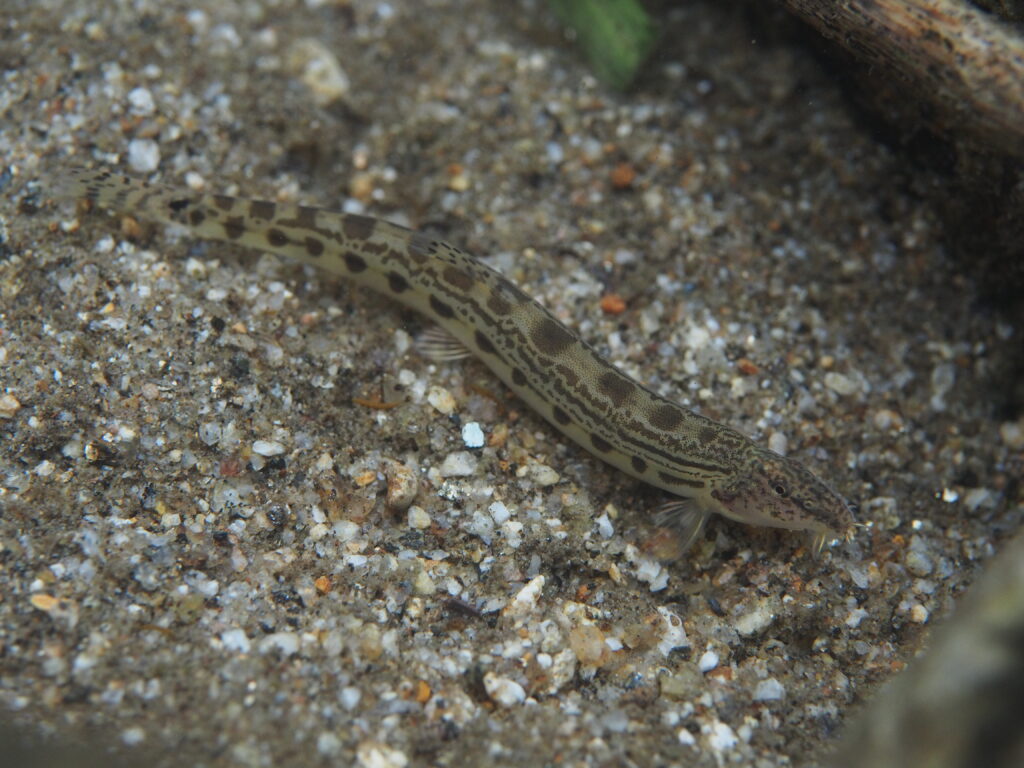
This article introduces five fish species from the midstream areas of Japanese rivers. I hope you’ve gained an understanding of how each species lives according to the flow and bottom diversity of the midstream areas. Generally, 20-30 species of fish inhabit these areas in most rivers. The five species introduced here are always found in the Honshu area of Japan. Start by remembering these species, and as you observe different ones, add them to your knowledge for a deeper understanding.
This accumulation of knowledge will give you the joy of learning and the depth of your journey!

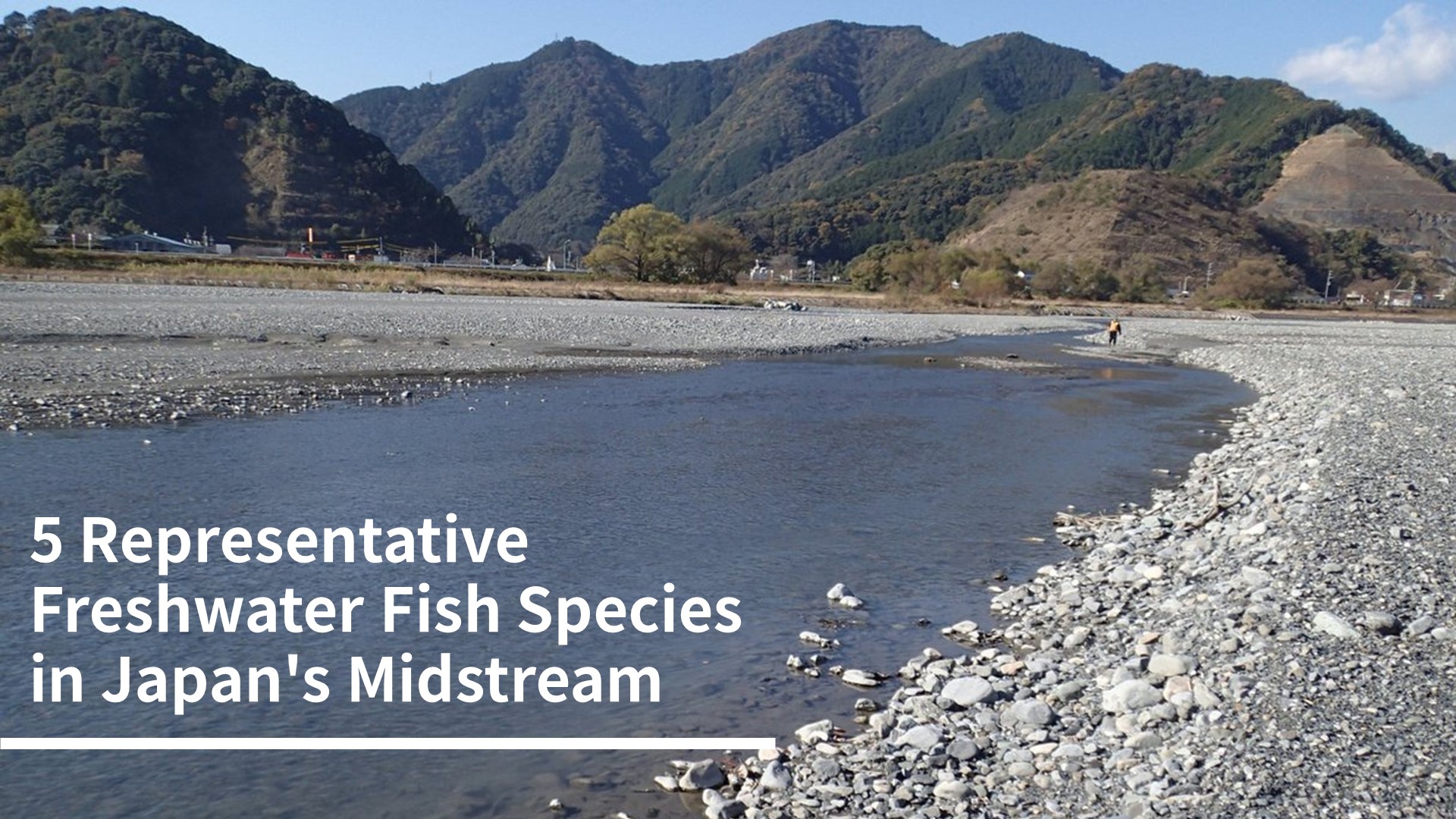


コメント